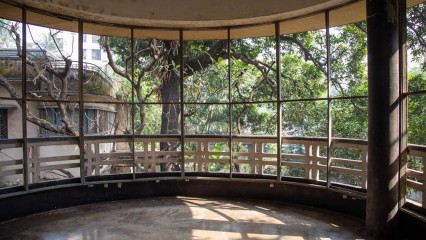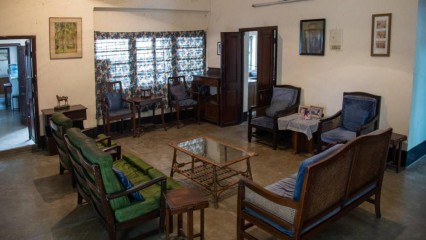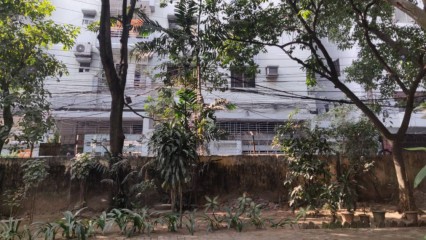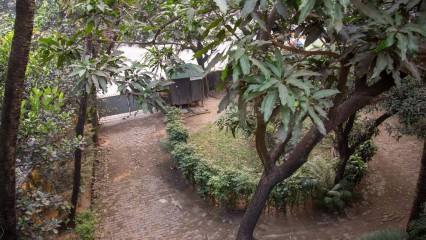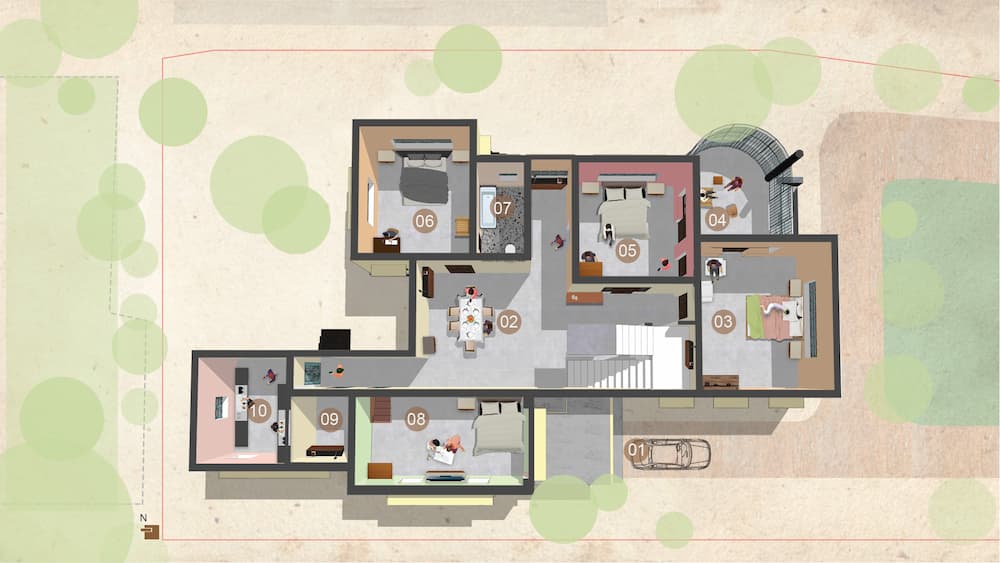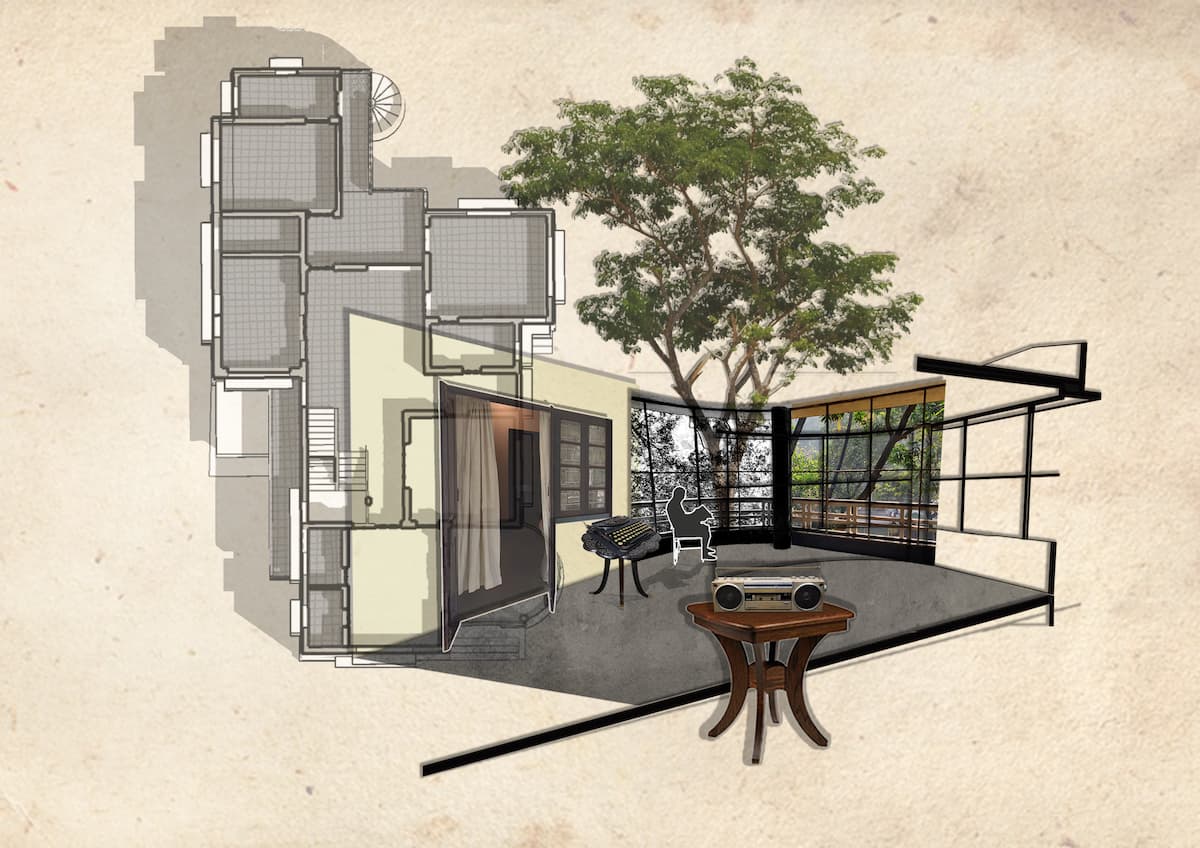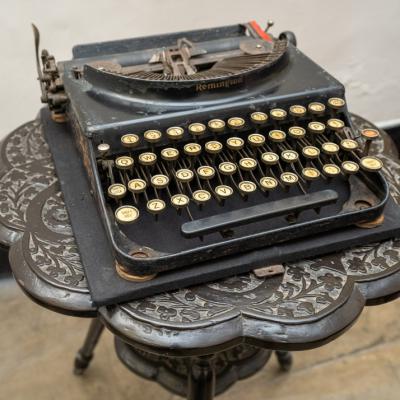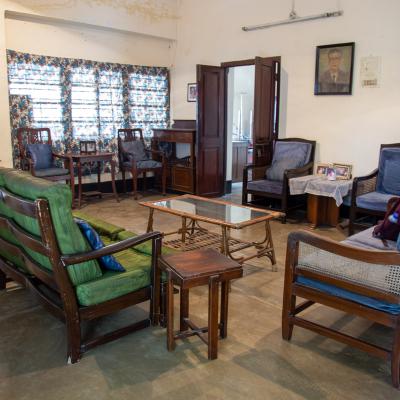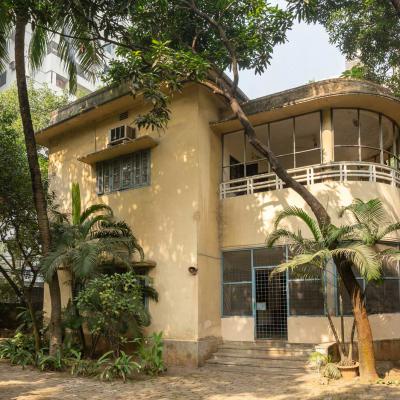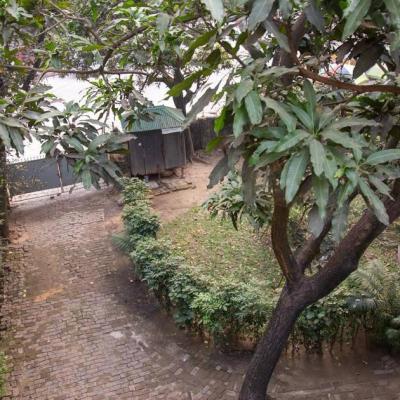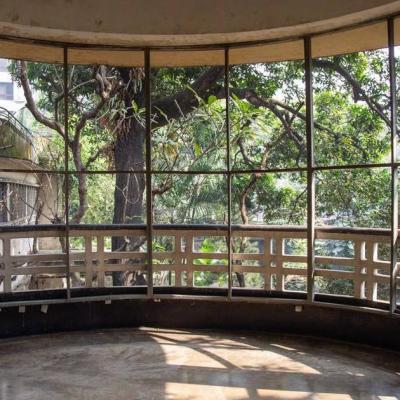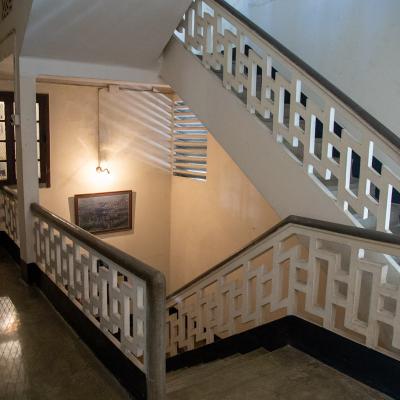1952
Eskaton
Kabir House
Kabir House is one of the few private properties built in the early 1950’s, amidst the government housing and staff quarters on Eskaton Road. Placed in between a large lawn on the south and a orchard in the north, the asymmetrical looking house was designed to accommodate a large family on two floors with spacious verandahs and common spaces. After the 1960s, the house was developed to accommodate a growing family. Remained unused for years, the appeal surrounding the house is withering, just like the house itself. And yet, Kabir House still remains as a place that is enriched by the past memories of its inhabitants.
Share with others
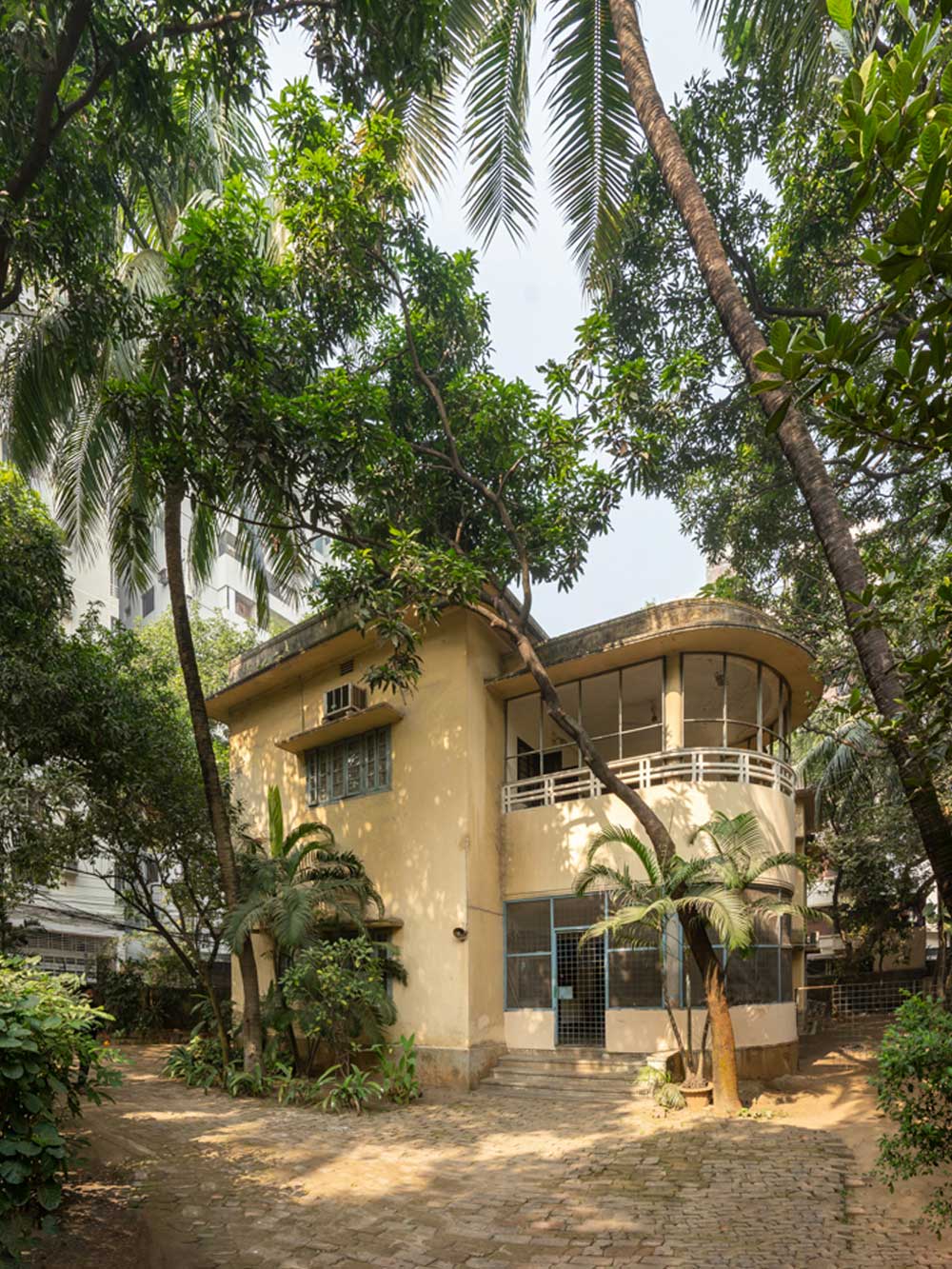
About Kabir House
In the middle of the government housing and staff quarters on Eskaton Road, Kabir house is one of the few properties built in the early 1950’s. The house faces a large south lawn, which at that time was typical of houses of upper middle class families in Dhaka. Initially the northern side of the plot consisted of an orchard with large trees. The house was situated between the lawn and the orchard. Today, this is one of the very few old structures to stand still amidst multistoried buildings in the neighborhood.
Although built as a family residence, this house initially served as a guest house for American consulates at that time. Since none of the family members reside in the house anymore, much of the house has deteriorated over the years. It was a much more vibrant, lively space that was maintained in impeccable condition when the original family still lived there.
Over time, this house has witnessed many transformations, both to the interior spaces and arrangements among the family members of the original owner, Syed Gholam Kabir. A member of the government civil service and a widower, Mr. Kabir, intended the house to be a safe "nest" where all his adult children could fall back on. He lived in the house with his two sons and three daughters. The house is a testament of his silent strength, support and love for his family. After the 1960s, the house was developed to accommodate a growing family.
Built in 1952, the house was initially rented out as a one unit home. It was used as a guest house by the United States Aid Agency. There was only one major renovation done in the late 1950s when it was converted from a single dwelling to a multiple dwelling residence. An addition was built in the north end of the building to add dining spaces on both levels and a kitchen on the first floor. The lower level was rented out until 1963. Since then it has been occupied by Mr. Kabir’s family members only.
This two storied building with closely placed large windows and a spacious front garden area surrounded by greenery depicts the connection of home and nature that was typical of residential design of the 1950s. The house welcomes the residents and guests with a large circular verandah at the entry level. The upper floor also has a verandah which overlooks the garden. Built by an engineer, there are some unique architectural features like the large span for uninterrupted open space in the living space, internal doors with windows and the interconnection of all the interior rooms.
Exploring the house
A heritage building need not be a monument or landmark building; it can be representative of an epoch or period in the history of the city in many ways. Through this project, we have captured various perspectives in the form of virtual tours, timelines, stories, photographs, architectural features and locations.
Use the buttons belows to navigate through this page.
Virtual tour
The virtual tour is a simulation of an existing location, composed of a sequence of still images. It gives a 360 view of the location and one can easily enjoy an immersive experience of the spaces sitting from anywhere in the world. In this case, this tour is enriched with all the relevant information, it also consists of old photo gallery, audio and video clips and various stories of the house.
The following icons has been used in the virtual tour to easily navigate and view details information, large images, photo gallery and videos. Click and hold and move the mouse or tap on the tour and drag in any direction to rotate the default view. You can also zoom in and zoom out the tour.
 |
Virtual tour control panel |
| Move to Previous node | |
| Move to Previous node | |
| Play/ pause Auto rotate | |
| Show/ hide information | |
| Show/ hide tour thumbs | |
| Play/ pause Audio | |
| Show large image | |
| Show image gallery | |
| Play video | |
| Next-Previous button on the tour |
Timeline
Residential buildings in cities have been an essential component of the city providing it with an architectural fabric, lifestyle practices and domestic order. However, with social and economic changes, many of the buildings are being replaced by new types, or often altered for insensitive transformations. This timeline shows the glimpse of many changes, many events this house or this neighborhood has witnessed with time.
Stories about Kabir House
All the houses represent a historic social significance of their time, as well as the personal stories of the resident family. As the stories unfold with important events surrounding the house or small details of how a certain space was used, or a furniture and object held dear, it becomes evident how some of these intangible aspects of the history of the house make them a distinctive heritage.
Architectural features
The house follows the pattern of having a bungalow type house with front lawn like many other upper middle class families in Dhaka. Infact, initially the northern side of the house was an orchard with large trees and some staff quarters. Around early 1980s, after property division, the orchard area turned into a multistoried apartment by its owner.
Use of the ground floor in 1952
Legend: 1. Entry, 2. Dining Room, 3. Bedroom, 4. Verandah, 5. Bedroom, 6. Bedroom, 7. Toilet, 8. Bedroom, 9. Servant Room, 10. Kitchen
Use of the ground floor in 2022
Legend: 1. Entry, 2. Living Area, 3. Dining Area, 4. Bedroom, 5. Verandah, 6. Bedroom, 7. Bedroom, 8. Toilet, 9. Bedroom, 10. Servant Room, 11. Kitchen
The south facing circular verandah was the heart of the house -- the perfect gathering space for all the family members. Shaded by a large tree this verandah reflects the need of connecting human space to nature in the day to day life.
Photo gallery
Architectural photography and 360° photography has been a major method of documentation for this project. The gallery is categorized into few groups for the convenience of the user to see and understand the various aspects of the houses.
Location
The idea is to select exemplary representatives of distintinctive epochs or cultures in the history of Dhaka. Five distinctive houses from five different areas have been selected from the greater Dhaka Metropolitan area for this phase of the project.
Exploring the house
A heritage building need not be a monument or landmark building; it can be representative of an epoch or period in the history of the city in many ways. Through this project, we have captured various perspectives in the form of virtual tours, timelines, stories, photographs, architectural features and locations.
Use the buttons belows to navigate to the details pages.

_thumbnail.jpg)
_thumbnail.jpg)
